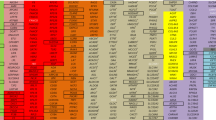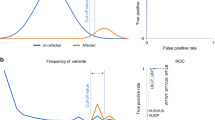Abstract
In the Netherlands, the call to add ‘non-treatable’ disorders to the newborn bloodspot screening programme has found a sympathetic ear with the Government. In 2019, the Health Council of the Netherlands was formally asked for advice on the conditions under which bloodspot screening for such disorders might be offered. Here we present the reasoning and the recommendations of the resulting report, and briefly discuss its reception. The report holds on to the classical view that screening must benefit the child, but argues for a wider account of child benefit than only in terms of substantial health gains. However, screening for ‘non-treatable’ disorders would still require evidence of a favourable benefits to harm ratio. The report presents a framework for such screening, but concludes that apart perhaps from Duchenne Muscular Dystrophy (DMD), no or only very few ‘non-treatable’ disorders would at present meet its criteria. Setting up a screening programme that might benefit only a small percentage of families struggling with uncertainty about their child’s diagnosis would not seem proportional. Instead, the Government is advised to invest in a better infrastructure for early referral, testing and care. The reaction to the report from proponents of such screening shows that the dividing line in the debate is not about whether screening neonates for ‘non-treatable’ disorders is acceptable in itself. It is rather whether such screening should be regarded as catering to a parental ‘right to know’, or as a public health service that should be subject to standards of evidence and proportionality.
This is a preview of subscription content, access via your institution
Access options
Subscribe to this journal
Receive 12 print issues and online access
$259.00 per year
only $21.58 per issue
Buy this article
- Purchase on SpringerLink
- Instant access to full article PDF
Prices may be subject to local taxes which are calculated during checkout
Similar content being viewed by others
References
Jansen ME, Metternick-Jones SC, Lister KJ. International differences in the evaluation of conditions for newborn bloodspot screening: a review of scientific literature and policy documents. Eur J Hum Genet. 2016;25:10–6.
Ross LF. Screening for conditions that do not meet the Wilson and Jungner criteria: the case of Duchenne muscular dystrophy. Am J Med Genet A. 2006;140:914–22.
Bailey DB Jr., Beskow LM, Davis AM, Skinner D. Changing perspectives on the benefits of newborn screening. Ment Retard Dev Disabil Res Rev. 2006;12:270–9.
EURORDIS. The Voice of Rare Disease Patients in Europe. Key principles for newborn screening. Brussels: EURORDIS. https://eurordis.org/newbornscreening 2021.
Alexander D, van Dyck PC. A vision of the future of newborn screening. Pediatrics 2006;117:S350–4.
Berg JS, Agrawal PB, Bailey DB Jr, Beggs AH, Brenner SE, Brower AM, et al. Newborn sequencing in genomic medicine and public health. Pediatrics. 2017;139:e20162252.
Remec ZI, Trebusak Podkrajsek K, Repic Lampret B, Kovac J, Groselj U, Tesovnik T, et al. Next-generation sequencing in newborn screening: a review of current state. Front Genet. 2021;12:662254.
Health Council of the Netherlands. Screenen op niet-behandelbare aandoeningen vroeg in het leven [Screening for non-treatable disorders early in life]. The Hague: Health Council of the Netherlands https://www.gezondheidsraad.nl/documenten/adviezen/2020/09/30/screenen-op-niet-behandelbare-aandoeningen-vroeg-in-het-leven 2020.
Matthews E, Brassington R, Kuntzer T, Jichi F, Manzur AY. Corticosteroids for the treatment of Duchenne muscular dystrophy. Cochrane Database Syst Rev. 2016;5:CD003725.
McDonald CM, Mercuri E. Evidence-based care in Duchenne muscular dystrophy. Lancet Neurol. 2018;17:389–91.
Ke Q, Zhao ZY, Mendell JR, Baker M, Wiley V, Kwon JM, et al. Progress in treatment and newborn screening for Duchenne muscular dystrophy and spinal muscular atrophy. World J Pediatr. 2019;15:219–25.
Tassone F. Newborn screening for fragile X syndrome. JAMA Neurol. 2014;71:355–9.
Bailey DB Jr, Skinner D, Davis AM, Whitmarsh I, Powell C. Ethical, legal, and social concerns about expanded newborn screening: fragile X syndrome as a prototype for emerging issues. Pediatrics. 2008;121:e693–704.
Parsons EP, Clarke AJ, Hood K, Lycett E, Bradley DM. Newborn screening for Duchenne muscular dystrophy: a psychosocial study. Arch Dis Child Fetal Neonatal Ed. 2002;86:F91–5.
Plass AM, van El CG, Pieters T, Cornel MC. Neonatal screening for treatable and untreatable disorders: prospective parents’ opinions. Pediatrics. 2010;125:e99–106.
Wade CH, Wilfond BS, McBride CM. Effects of genetic risk information on children’s psychosocial wellbeing: a systematic review of the literature. Genet Med. 2010;12:317–26.
Wakefield CE, Hanlon LV, Tucker KM, Patenaude AF, Signorelli C, McLoone JK, et al. The psychological impact of genetic information on children: a systematic review. Genet Med. 2016;18:755–62.
Ross LF, Clayton EW. Ethical issues in newborn sequencing research: the case study of BabySeq. Pediatrics. 2019;144:e20191031.
Parsons EP, Clarke AJ, Hood K, Bradley DM. Feasibility of a change in service delivery: the case of optional newborn screening for duchenne muscular dystrophy. Community Genet. 2000;3:17–23.
Chung J, Smith AL, Hughes SC, Niizawa G, Abdel-Hamid HZ, Naylor EW, et al. Twenty-year follow-up of newborn screening for patients with muscular dystrophy. Muscle Nerve. 2016;53:570–8.
Moat SJ, Bradley DM, Salmon R, Clarke A, Hartley L. Newborn bloodspot screening for Duchenne muscular dystrophy: 21 years experience in Wales (UK). Eur J Hum Genet. 2013;21:1049–53.
Wotton T, Wiley V, Bennetts B, Christie L, Wilcken B, Jenkins G, et al. Are we ready for fragile X newborn screening testing? Lessons learnt from a feasibility study. Int J Neonatal Screen. 2018;4:9.
Tassone F, Pan R, Amiri K, Taylor AK, Hagerman PJ. A rapid polymerase chain reaction-based screening method for identification of all expanded alleles of the fragile X (FMR1) gene in newborn and high-risk populations. J Mol Diagn. 2008;10:43–9.
Verhaart IEC, Aartsma-Rus A. Therapeutic developments for Duchenne muscular dystrophy. Nat Rev Neurol. 2019;15:373–86.
Gatheridge MA, Kwon JM, Mendell JM, Scheuerbrandt G, Moat SJ, Eyskens F, et al. Identifying non-Duchenne muscular dystrophy-positive and false negative results in prior Duchenne muscular dystrophy newborn screening programs: a review. JAMA Neurol. 2016;73:111–6.
Schuurmans J, Birnie E, van den Heuvel LM, Plantinga M, Lucassen A, van der Kolk DM, et al. Feasibility of couple-based expanded carrier screening offered by general practitioners. Eur J Hum Genet 2019;27:691–700.
VSOP Patient alliance for rare and genetic diseases. Letter to the State Secretary in response to the Health Council’s report ‘Screening for non-treatable disorders early in life’. Soest: VSOP. https://vsop.nl/actueel/de-vsop-pleit-voor-een-aangepast-besliskader-voor-de-hielprik/ 2020.
Newson AJ. The promise of public health ethics for precision medicine: the case of newborn preventive genomic sequencing. Hum Genet. 2021, https://doi.org/10.1007/s00439-021-02269-0. Online ahead of print.
Acknowledgements
The authors wish to acknowledge the Standing Committee on Preconception, Prenatal & Neonatal Screening of the Health Council of the Netherlands. For composition, see ‘Supplementary Material’.
Funding
There was no specific funding for writing this paper.
Author information
Authors and Affiliations
Contributions
SK and WD have conceived, designed and drafted the manuscript. Both authors have approved the final version after submitting it to the Committee (see sub Acknowledgements) for comments. Both are accountable for all aspects of the work.
Corresponding author
Ethics declarations
Competing interests
Authors are staff and member of the Committee of the Health Council of the Netherlands that has drawn up the report discussed in this paper.
Additional information
Publisher’s note Springer Nature remains neutral with regard to jurisdictional claims in published maps and institutional affiliations.
Supplementary information
Rights and permissions
About this article
Cite this article
Kalkman, S., Dondorp, W. The case for screening in early life for ‘non-treatable’ disorders: ethics, evidence and proportionality. A report from the Health Council of the Netherlands. Eur J Hum Genet 30, 1155–1158 (2022). https://doi.org/10.1038/s41431-022-01055-4
Received:
Revised:
Accepted:
Published:
Issue date:
DOI: https://doi.org/10.1038/s41431-022-01055-4
This article is cited by
-
Happy 30th birthday to the European Journal of Human Genetics!
European Journal of Human Genetics (2022)



